By dint of the several
endeavors by the governmental as well as non-governmental organizations in the
past years, Nepal has achieved significant progress in the domain of students’
enrollment and gender equality in the schools. Despite the aforementioned fact,
the rate of school dropouts and failure is high in the schools of Nepal.
Anemia, underweight, dwarfness and zinc deficiency are some of the major
health-related issues that the children face because of malnutrition. The
condition is even worse for the children of rural areas belonging from
marginalized background.
With
the aim of increasing students' enrollment rate and improvising the quality of
education by improving the health status of children, a school meal program was
started in Nepal in 1967 AD. Since then, the school meal programs have been quite
efficacious in Nepal that has been able to fulfill just the basic nutritional
standard set by the government, i.e.; the availability of 30% of nutritional
needs for school going children. That’s when the “Smiling Children Program
(School Feeding)” introduced in Nepal, planning to step further by making
the availability of additional nutritional needs (up to 48% nutrition
fulfillment).
Along
with educational impact, the project plans to reduce the Anemia, underweight,
dwarfness and zinc deficiency major health related issues that the children
face because of malnutrition. So, the intervention of the project is to improve
the education of the children considering the deficiency of the malnutrition
with the nutritional food support based on the standard of “WHO”. Apart from meal
support to targeted school children of selected community schools, the program also
provides employment opportunities to the mothers of beneficiary children for
meal preparation and feeding activities. In addition to these, mothers’ groups
have been benefitted with various trainings like Food Safety and Hygiene
Training, Kitchen and Warehouse Management Training, Fire Safety Training, etc.
Following the need, with the support of China Foundation for Rural Development
(CFRD), Global Cooperation for Development (GCD) has been implementing the Smiling Children Program (School Feeding)
since 2022 AD. The main purpose of the program is to support improvised school-going
children (ECD to 5), lacking sufficient nourishment, primarily targeting SDG 2 (Zero hunger), while contributing
to SDG 4 (Quality Education) and SDG 3 (Good Health and Well-Being). As
far as we come to August 2025, Smiling Children Program (School Feeding)
has benefitted 17,329 students across 50 community schools of Kathmandu
Metropolitan City, Lalitpur Metropolitan City, Kirtipur Municipality, Godawari
Municipality and Nagarjun Municipality.
Yearly Data of Smiling Children Program (School Feeding)
Education being a
fundamental human right, in context of Nepal, children from socially
excluded and marginalized groups continue to face significant barriers in
accessing quality education. The school education system is challenged by low
participation rates, high dropout levels, and limited progression,
particularly among disadvantaged communities. These issues stem from a
combination of factors, including inadequate access to educational
resources, weak school management systems, and insufficient engagement between
parents and teachers. One of the key indicators of this challenge is low
internal efficiency, which is often reflected in low student
achievement, high repetition rates, and early school dropout,
especially at the primary level. For addressing these complex issues, the Education
Support Program (School Bags, Stationery Items, Hygiene Kits & Warm Clothes
Package) is a targeted initiative aimed at enhancing access to
education and improving the well-being of children in marginalized and
vulnerable communities of Nepal. The program provides essential learning
materials such as school bags, notebooks, pens, pencils and many other items,
along with hygiene kits that include soap, toothpaste, toothbrushes, and
sanitary items to promote cleanliness and personal care among school-going
children. Additionally, warm clothes—including track set, caps, mufflers,
gloves and socks—are distributed, especially during the winter months, to
ensure that children can attend school comfortably despite harsh weather
conditions. By addressing both educational and basic physical needs, the
program reduces barriers to school attendance, supports regular participation
in classroom activities, and fosters a healthier, safer, and more inclusive
learning environment.
v In
2022, a total of 10,000 school bags were distributed under the “Education
Support Program”. The distribution covered 11 districts, including 1
metropolitan city, 10 municipalities, and 11 rural municipalities, reaching a
total of 79 schools. The support benefited 4,956 male and 5,044 female
students, promoting access to basic educational materials and encouraging
school attendance across diverse geographical areas.
v Likewise, in 2023, the program again supported school-aged
children through the distribution of 20,006 school bags across 10 districts,
including 1 metropolitan city, 6 municipalities, and 17 rural municipalities,
covering a total of 208 schools. This initiative benefited 10,139 male and
9,867 female students, aiming to promote equitable access to basic educational
materials and encourage continued school attendance. In the same year, the
program benefitted 5,933 students by Warm Clothes Packages in 5 districts,
reaching 1 metropolitan city, 5 municipalities, and 4 rural municipalities, and
covering 101 schools. Among the recipients were 2,918 male and 3,015 female
students. This seasonal support was
especially critical in helping children stay warm during the winter months,
thereby improving their comfort, health, and overall school participation.
v Similarly, additional 1,000 sets of school bags were
provided to 1,133 students, having 586 male and 547 female students; covering 6
schools across 3 municipalities and 3 rural municipalities of 4 districts.
v Coming
to 2024, school bags’ sets again were distributed to 4,978
students across 44 schools located in one sub-metropolitan city, one
municipality, and three rural municipalities spanning four districts.
Additionally, warm clothes packages were provided to 1,250 students from 14
schools situated in one municipality and two rural municipalities across three
districts. The initiative ultimately contributes to improving student
retention, academic engagement, and overall quality of education in
under-resourced areas.
Nepal's tea industry is not merely a
source of livelihood; it represents a cultural and economic tradition deeply
rooted in the country's history. By the virtue of its diverse geography and
suitable agro-climatic conditions, Nepal possesses enormous potential to become
a prominent player in the global tea market.
Despite this potential, the majority of
tea farmers in Nepal remain smallholders struggling with multitude of challenge
that hinder their economic prosperity. These challenges include political
instability, lack of infrastructure, and competition from tea producing
neighboring countries like India and China.
However, in recent years, there has been a
comeback of interest in Nepali tea due to its unique flavor profiles and high
quality.
Recognizing the necessity to address those
aforementioned challenges and harness the full potential of the tea industry,
with the financial support of China Foundation for Rural Development (CFRD),
we, Global Cooperation for Development (GCD) as an implementing partner,
embarked on a transformative journey towards enhancement of tea value chain.
The Economic Upliftment of
Smallholders through Tea Value Chain Enhancement Project is a
development initiative aimed at improving the livelihoods of smallholder
farmers and cooperatives by strengthening the tea value chain in Nepal;
currently having its project location at Myagang Rural Municipality-4, Kimtang,
Nuwakot and Mahankal Rural Municipality-3, Gotikhel, Lalitpur, employing
hundreds of them.
This
project focuses on equipping tea cooperative farmers with high-quality tea
machinery, which is expected to revolutionize the productivity, quality, and
market access of small-scale tea growers, particularly in economically
disadvantaged regions. Through capacity building, improved farming practices,
access to quality inputs, and the promotion of sustainable cultivation methods,
the project empowers farmers to increase their income and competitiveness in
both domestic and international markets. Additionally, it fosters the
establishment of farmer cooperatives and supports linkages with processing
units and buyers, ensuring fair prices and value addition at the local level.
By addressing key gaps in the production, processing, and marketing stages, the
project contributes to rural economic growth, job creation, and long-term
sustainability in the tea sector.
Nepal,
a country known for its varied topography, frequently experiences unavoidable
natural calamities, with flood being one of the most recurrent and devastating one.
In September 2024, several regions across Nepal experienced intense and
prolonged rainfall, leading to widespread flooding that affected thousands of
families, infrastructures, and the economy.
As
of September 2024, an estimated 1.5 million people across multiple provinces
have been directly affected by flooding, with over 150,000 displaced from their
homes.
During
that period, the Kathmandu Valley experienced severe flooding following an unprecedented
heavy monsoon rain.
While
the loss of life was limited to fewer than 20 people due to rapid evacuation
efforts; the floods displaced thousands of families in Kathmandu, Lalitpur and
other nearby regions. Many homes, particularly in lower-income neighborhoods,
were destroyed or severely damaged, forcing people to seek temporary shelter in
schools, community centers, and public spaces. Over 50,000 people were directly
affected, with many losing personal property, household goods, and livelihoods
due to the water damage.
To
identify the most vulnerable households that requires food and family kits
assistance, the “Disaster Relief Project in Nepal”
worked as a coordinated emergency response and recovery initiative aimed for supporting
communities affected by flood and landslide. 600 families throughout various
municipalities and rural municipalities of Lalitpur and Kavre were benefitted
by this emergency response; where the relief packages included food and
non-food items crucially essential for daily needs. This project focused on
the timely delivery of life-saving assistance—to disaster-affected populations,
especially in remote and high-risk areas. It also emphasized the protection of
vulnerable groups including children, women, the elderly, and persons with
disabilities. Implemented in collaboration with the District Disaster
Management Committee, local level and humanitarian partners, the project also
incorporates disaster risk reduction, awareness, and preparedness training. In
doing so, it not only addresses immediate needs but also helps build community
resilience to future disasters, contributing to long-term recovery and
sustainable development.
Agriculture,
being the backbone of Nepal’s economy, makes up about 27% of the country’s
Gross Domestic Product (GDP) and gives work to over 60% of the people. Within
agriculture, vegetable farming is a crucial part. Although there is no separate
figure showing how much vegetables alone contribute to the GDP, they are a key
part of both food supply and exports.
In
Bagmati Province, vegetable farming is especially important because the soil is
very fertile. Also, there is high demand for fresh vegetables in cities like
Kathmandu Valley which makes vegetable farming a big part of the local economy
and an important source of income for farmers.
Despite
the importance of vegetables, productivity remains low.
Several
reasons cause this low output, like, many farmers have limited access to
reliable sources of water, making irrigation difficult. Second, modern
technologies are not widely used, as many farmers still rely on traditional
methods. Third, pest control practices are not always effective, leading to
crop losses. Poor roads and weak connections to markets also make it hard for
farmers to sell their production. In addition, unpredictable weather and natural
disasters such as floods, landslides, and droughts often damage crops. All
these factors have kept productivity lower than it could be.
The
government of Nepal recognizing how important agriculture is for reducing
poverty and improving food security has created several plans and policies to
help. One of the main plans is the Agriculture Development Strategy (ADS)
2015–2035 aiming to increase agriculture’s contribution to the national
economy and making sure all people have access to enough nutritious food and
also focuses on promoting sustainable farming.
Along
with the ADS, the government has launched the Prime Minister Agriculture
Modernization Project (PMAMP) which focuses on modernizing farming
practices across the country and increasing output.
PMAMP
supports developing and sharing high-yielding varieties of crops, including
vegetables, to help farmers get better results. It also focuses on improving
water management, so irrigation can be more efficient and reliable. In
addition, it promotes new agricultural technologies that can help farmers cope
with weather risks and produce crops more effectively.
Greenhouses
are one of these important modern technologies. They provide a protected
environment where vegetables can be grown throughout the year, no matter what
the weather is like outside. In a greenhouse, temperature, humidity, and water
can be controlled. Greenhouses also help protect crops from pests and diseases
which ultimately reduce crop loss and improve quality.
The
“Technical Cooperation in Vegetable Production (Greenhouse) Project”
has been proposed to support these goals which plan to help develop and promote
high-yielding hybrid vegetable varieties that suit the different climates and
regions of Nepal.
The
project, in the recent time, covering two locations; i.e., Hudu of
Dakshinkali Municipality-9 and Khokana of Lalitpur Metropolitan City-21,
also aims to train farmers to use greenhouse technology properly which will
help them improve their yields, reduce losses, and have more reliable harvests.
By using greenhouses, farmers can also use water more efficiently, which is
very important in areas where water is scarce.
Overall,
better vegetable production will bring many benefits to Nepal. It can help
farmers earn more money, create more jobs in rural areas, and improve people’s
nutrition by making fresh vegetables more available. When production increases,
Nepal will not have to import as many vegetables, which helps the economy.
This
project fits perfectly with Nepal’s national plans like the ADS and PMAMP. It
supports the goals of modernizing agriculture, making farming more productive,
and protecting natural resources for the future. With better seeds, greenhouse
technology, and farmer training, Nepal can improve food security, reduce poverty,
and build a stronger agricultural sector.
Along with these goals its objective also includes building the skills
of farmers and local governments through training, research, and partnerships.
Agriculture being the backbone of
Nepal’s economy, contributes 27% to country’s GDP, and employs more than 60% of
the total population. Rice, the staple food crop in Nepal with
an annual production of around 5.6 million tons, accounts for 20% of the
country's agricultural GDP.
However, the average rice productivity remains low at around 3.5 tons/hectare,
far below the global average, due to outdated farming practices, limited access
to improved seeds, and inadequate technology. This threatens food security and
rural livelihoods.
The
Nepal government has recognized the importance of increasing agricultural
productivity and improving food security through various national plans and
policies. The Agriculture
Development Strategy (ADS) 2015-2035 aims to increase the agricultural
sector's contribution to the national economy, improve food and nutrition
security, and promote sustainable agriculture practices. One of the key
objectives of the ADS is to enhance productivity through the promotion of improved
seeds, efficient irrigation systems, and the adoption of modern agricultural
technologies.
Furthermore,
the Government of Nepal has recently launched the Prime Minister Agriculture
Modernization Project (PMAMP) to modernize the agricultural sector and
enhance productivity. The project emphasizes the development and dissemination
of high-yielding rice varieties, as well as the promotion of efficient water
management practices and the adoption of innovative agricultural technologies.
The “Nepal Hybrid Rice
South Agricultural Science and Technology Park” project addresses
this challenge by developing high-yielding hybrid rice varieties suited to
Nepal’s diverse climates. Aligning with national strategies like the ADS and
the PMAMP, the initiative aims to boost yields, promote sustainable
farming, and strengthen farmer capacity through research and training. The
project is crucial for enhancing food security, reducing poverty, and
modernizing agriculture. By fostering public-private partnerships and
technology transfer, it ensures long-term benefits for smallholder farmers.
This initiative reflects a commitment to sustainable development, aligning with
global goals of improving rural economies and resilient food systems.
The
proposed 'Nepal Hybrid Rice Science and Technology Park' project aligns with
the government's national plans and policies by focusing on the development and
promotion of high-yielding hybrid rice varieties suitable for the diverse
agro-ecological zones of Nepal. Working in close collaboration with Agriculture
and Forestry University (AFU), Bharatpur, Chitwan, the project's main
anticipated outcomes will contribute to achieve following objectives:
Ø Enhance
rice productivity and promote sustainable agricultural practices by
disseminating various varieties of superior hybrid rice, suitable for Nepal’s
diverse climatic conditions, with a particular focus on Chitwan district.
Ø Promote
high-yielding hybrid rice varieties adapted to Chitwan through trials and
varietal selection.
Ø Enhance
seed adoption and accessibility by ensuring availability of high-quality seeds
for local farmers.
Ø Strengthen
capacity building through the trainings, demonstration plots and research
support for the cultivation.
Ø Foster
collaboration and policy support, engaging stakeholders to mainstream modern
technologies in Nepal’s agricultural policies.
The “Support
to School and Communities in Rural Areas for Pandemic Prevention and Green
Recovery Project” in Nepal, funded by United Nations Development
Programme (UNDP) and supported by the China Foundation for Rural Development (CFRD),
was implemented by Global Cooperation for Development (GCD), aiming to
strengthen educational continuity and health resilience in remote areas
affected by the COVID-19 pandemic. Targeting vulnerable and marginalized
communities in Rautahat and Sarlahi districts of Madhesh Province, the project
focused on 30 community schools and benefitted 18,000 students at 2 separate
rounds. A key component of the initiative was the distribution of essential
school supplies and hygiene materials to ensure safe and uninterrupted
learning. Students received school bags filled with stationery items such as
notebooks, pens, pencils, geometry box, drawing materials, tiffin box, water
bottle to support their education. In parallel, hygiene kit containing soap, face
masks, face towel, toothbrush, toothpaste, bandage, thermometer and sanitizer;
altogether 20 items, were provided to promote personal hygiene and reduce the
risk of disease transmission. The distribution was part of a broader strategy
that included upgrading school WASH (Water, Sanitation and Hygiene)
infrastructure and promoting inclusive, gender-sensitive support. These efforts
aimed not only to help students return to school safely but also to build
long-term resilience in schools and communities through integrated pandemic
prevention and green recovery measures.
Following the successful execution of all core activities
under the Disaster relief Project, including final evaluation and report
overseen by the Social Welfare Council, a surplus budget was recorded.
After careful assessment, it was concluded that this remaining fund could be
optimally utilized by investing in flood preparedness infrastructure high-risk areas.
Dakshinkali Municipality and Gotikhel of Mahankal Rural Municipality
have
been identified as high-risk zones for water-induced disasters, especially
during the monsoon season. Reinforcing early warning capacity was seen as a
critical intervention to safeguard lives, reduce losses, and prepare
communities for future calamities.
This intervention was made
possible through the reallocation of unutilized funds from the completed Disaster
Relief Project demonstrating a transparent use of the remaining fund to
reinforce disaster preparedness in flood-prone areas and addressing the growing
need for real-time flood risk monitoring and community-based early warning
mechanisms, particularly in light of increasing climatic hazards with the
objectives:
·
To enhance flood risk monitoring capacity in
Dakshinkali and Gotikhel.
·
To establish reliable early warning systems to
alert communities ahead of rising flood threats.
·
To ensure proper use of remaining project funds
in a transparent and impactful manner.
·
To build local capacity in disaster preparedness
through community training.
The Jajarkot Earthquake
Family Pack Relief Packages Project was initiated to provide urgent
humanitarian assistance to families severely affected by the earthquake in
Jajarkot district. The primary objectives of the project were to deliver
immediate relief and support to families enduring harsh living conditions and
to ensure the timely distribution of essential Family Pack supplies to those in
need. Under this initiative, a total of 2,000 Family Pack sets were distributed
across three municipalities and two rural municipalities of Jajarkot and one
municipality and one rural municipality of West Rukum, addressing the immediate
non-food needs of the impacted population. The project played a crucial
role in supporting vulnerable communities during a critical recovery period.
The
West Rukum Relief and Recovery Project was carried out to
support families affected by the earthquake in coordination with the National
Disaster Risk Reduction and Management Authority (NDRRMA) of Nepal. With the
generous and emergency support of CFRD, GCD implemented the project to deliver timely
and essential aid to those most in need. As part of the relief efforts, 3,906
Food Pack sets were delivered to families in three municipalities and three
rural municipalities of Jajarkot and two municipalities and one rural
municipality of West Rukum, helping to alleviate food insecurity in the
aftermath of the disaster. In addition to the distribution of food and non-food
relief items—including Family Kit Packages, Warm Clothes Packages, and Food
Packages—the project also conducted rapid needs assessments to identify and
prioritize the most vulnerable groups. This initiative has played a vital
role in easing the hardships faced by affected communities and reinforcing
resilience during a critical recovery period.
The Emergency Family Kits Distribution Program was
carried out in Purbichauki Rural Municipality of Doti District to
support communities affected by the devastating earthquake. This initiative was
made possible through the Emergency Family Kit Distribution Program 2022,
a humanitarian effort led by the Global Cooperation for Development (GCD)
with generous financial support from the China Foundation for Rural
Development (CFRD). Recognizing the urgent needs of displaced and
vulnerable families, the project aimed to provide essential non-food relief
items that would help them regain a sense of stability and dignity during the
recovery phase.
A total of 400 family kits were distributed directly
to earthquake-affected households. Each kit was carefully prepared to address
basic household and hygiene needs, which included: a tent for temporary
shelter, a blanket for warmth, a towel, sanitary pads, soap,
toothpaste, and a toothbrush; an essential basic need. These
items were chosen to meet immediate needs for cleanliness, health, and
protection from the elements, especially in the face of harsh post-disaster
living conditions.
It was also highlighted in national media, including in a Nepal
Live Today article titled “China Foundation for Rural Development
donates relief materials to Doti earthquake victims,” which brought
attention to the vital impact of the program on the ground.
Overall, the Emergency Family Kits Distribution Program in
Doti made a meaningful difference in the lives of hundreds of families, helping
them navigate the immediate aftermath of the disaster with greater comfort and dignity.
The
Rasuwa Monsoon Relief Distribution Program 2023 was implemented
to support communities of Uttargaya Rural Municipality, Rasuwa District,
who were affected by the challenges brought on by the monsoon season. Heavy
rains during the monsoon often increase the vulnerability of already remote and
underserved communities, particularly in terms of shelter, warmth, and access
to education and health essentials. In response to these needs, the program
focused on both household-level and educational support.
A
total of 60 households in the rural municipality received blankets,
providing critical warmth and protection against the cold and damp conditions
that frequently follow the monsoon. This direct support helped families
maintain basic comfort and well-being in the aftermath of seasonal disruptions.
In
addition to household support, the program extended its assistance to the
education sector by providing a comprehensive set of educational materials
to Shree Dandagaun Secondary School, located in the same municipality.
The education support package included not only learning materials for students
but also essential sanitary items and a first aid box,
contributing to a safer, healthier, and more inclusive learning environment.
This
targeted relief effort reflects a holistic approach—addressing both immediate households
needs and the longer-term importance of education and health for children.
Through the Rasuwa Monsoon Relief Distribution Program 2023, the initiative
aimed to improve the resilience of the local community while fostering a
supportive environment for students and their families during a challenging
season.
The
Warm Kit Distribution Program was conducted across three of the most
vulnerable rural municipalities in Manang District, namely Chama,
Deshang, and Narsho, targeting households living in high‑altitude and
cold-prone areas. Supported by the China Foundation for Rural Development
(CFRD) and facilitated by Global Cooperation for Development (GCD),
the initiative reached a total of 300 families, with 100 families
in each municipality receiving assistance.
Each
beneficiary household were provided with a warm set of blankets, aimed to
protect individuals—especially the elderly and economically disadvantaged; against
severe weather conditions during the winters. These targeted distributions were
carried out through carefully, ensuring that assistance reached those most in
need.
This
intervention demonstrates the power of international collaboration in
addressing basic survival needs in Nepal’s remote regions. The coordinated
efforts by CFRD and GCD served to alleviate hardship and improve resilience
among harsh weather‑affected communities in Manang.
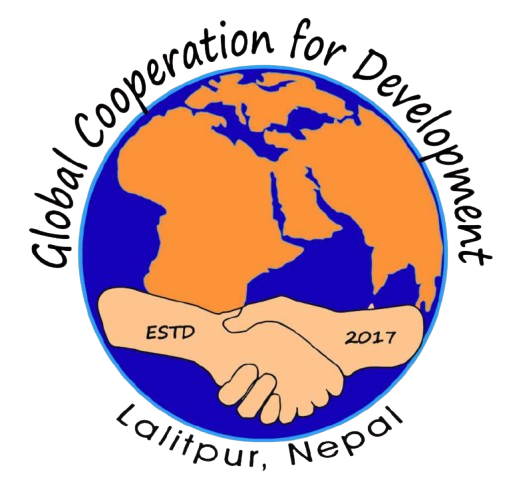
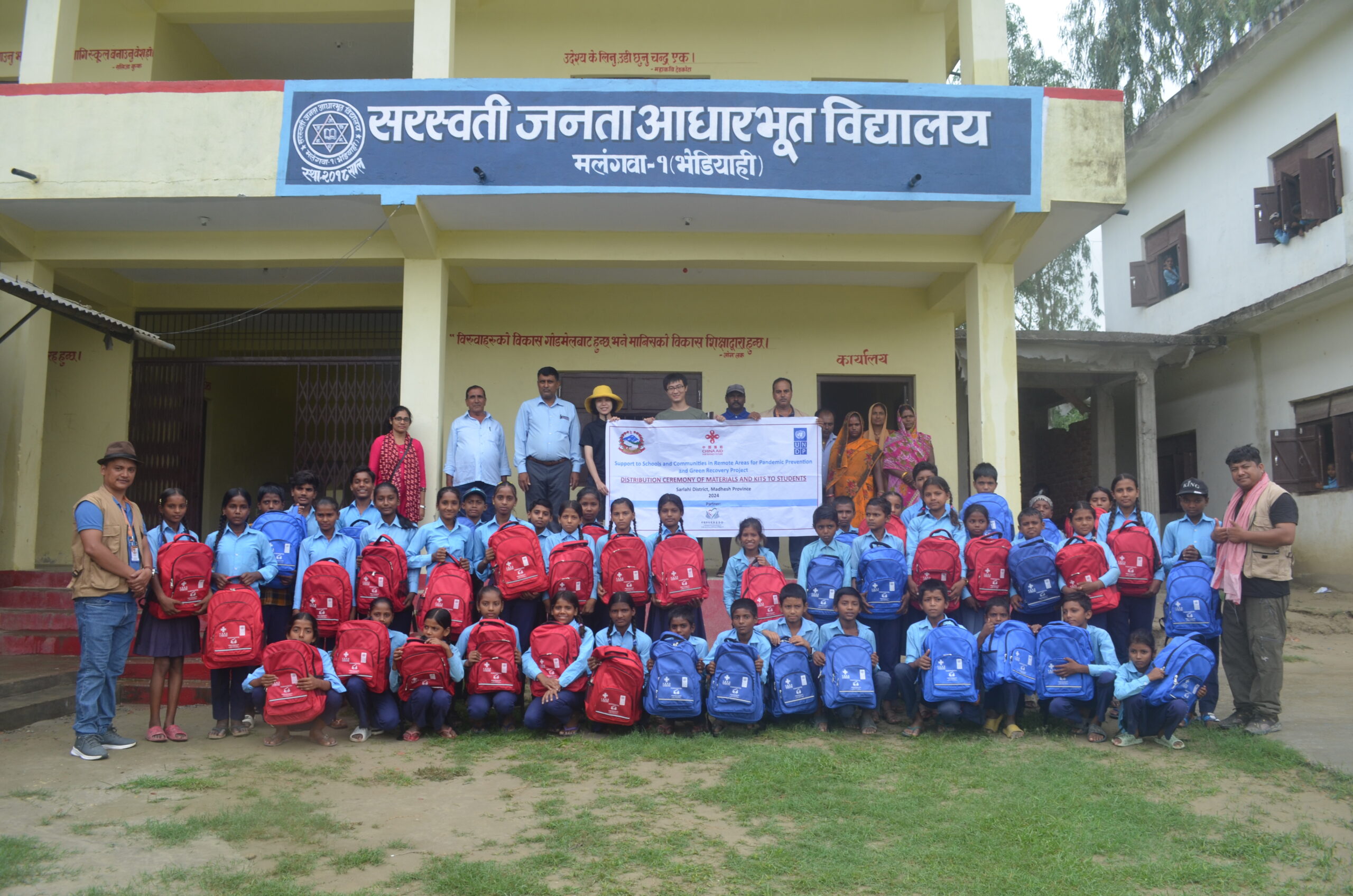
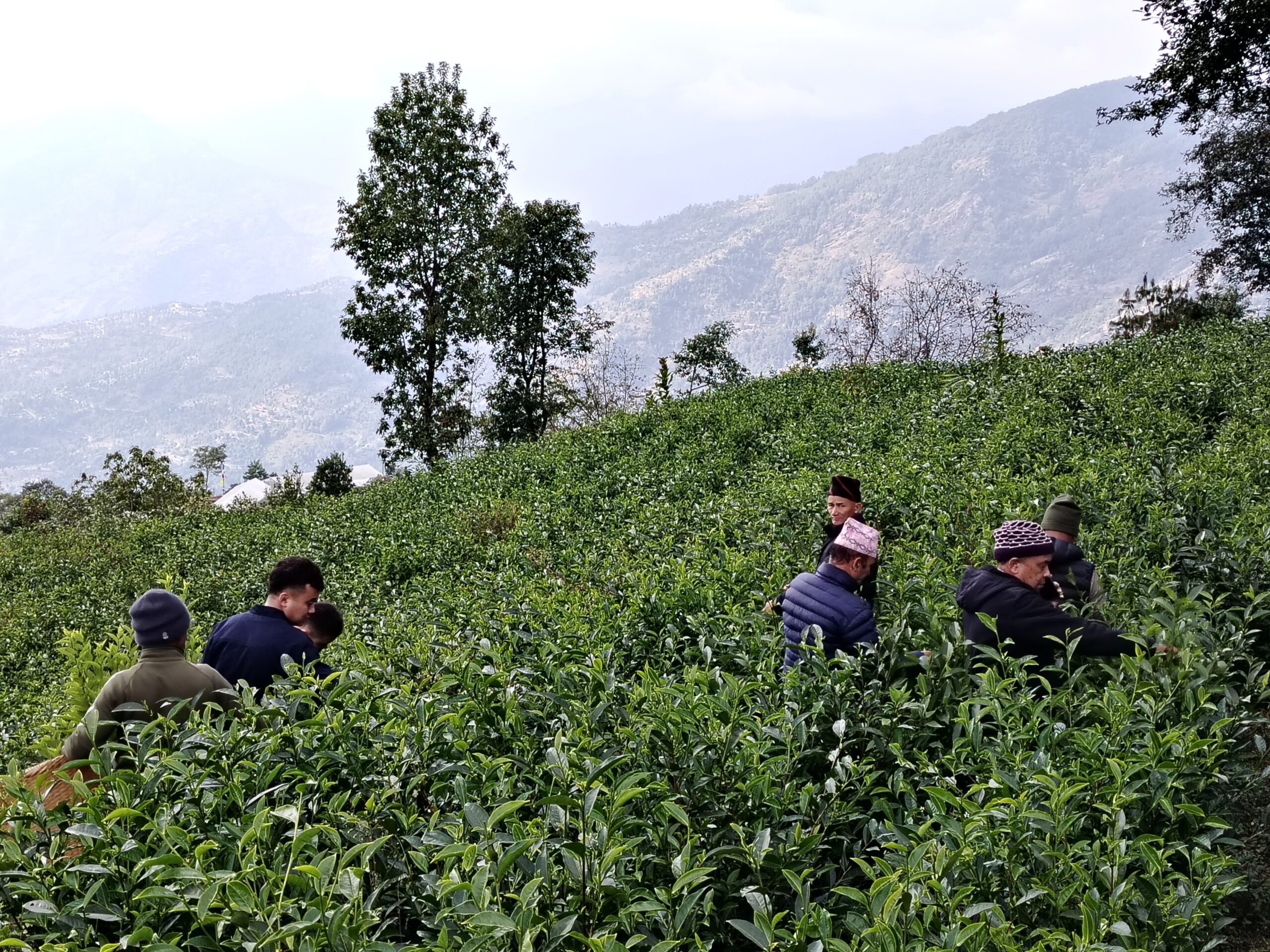












































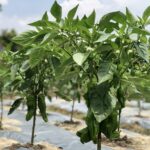
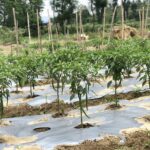
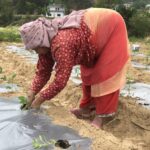


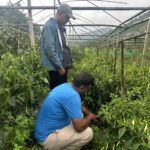
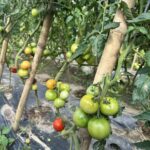
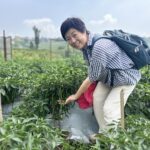
















![{"data":{"edit_info":0,"product":"aweme","prop_list":"","sticker_extra_info":"[]"}}](https://gcdnepal.com/wp-content/uploads/2025/08/Image_20250724170235-150x150.jpg)
















































